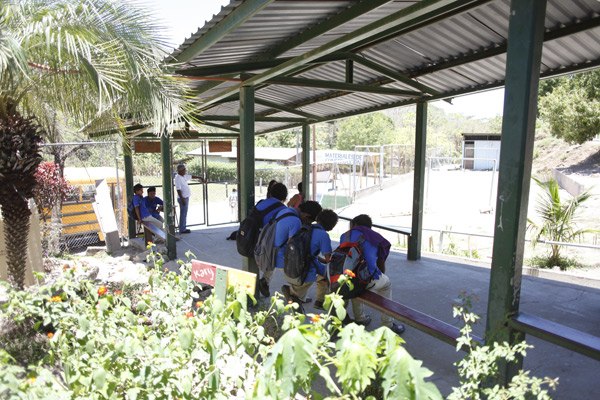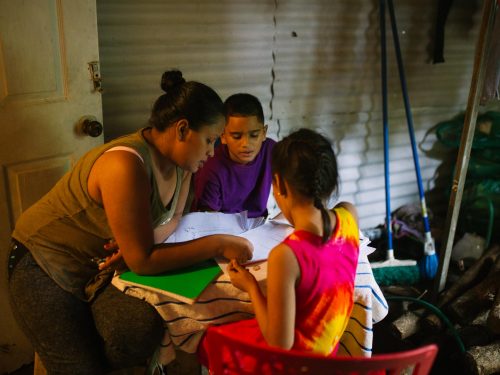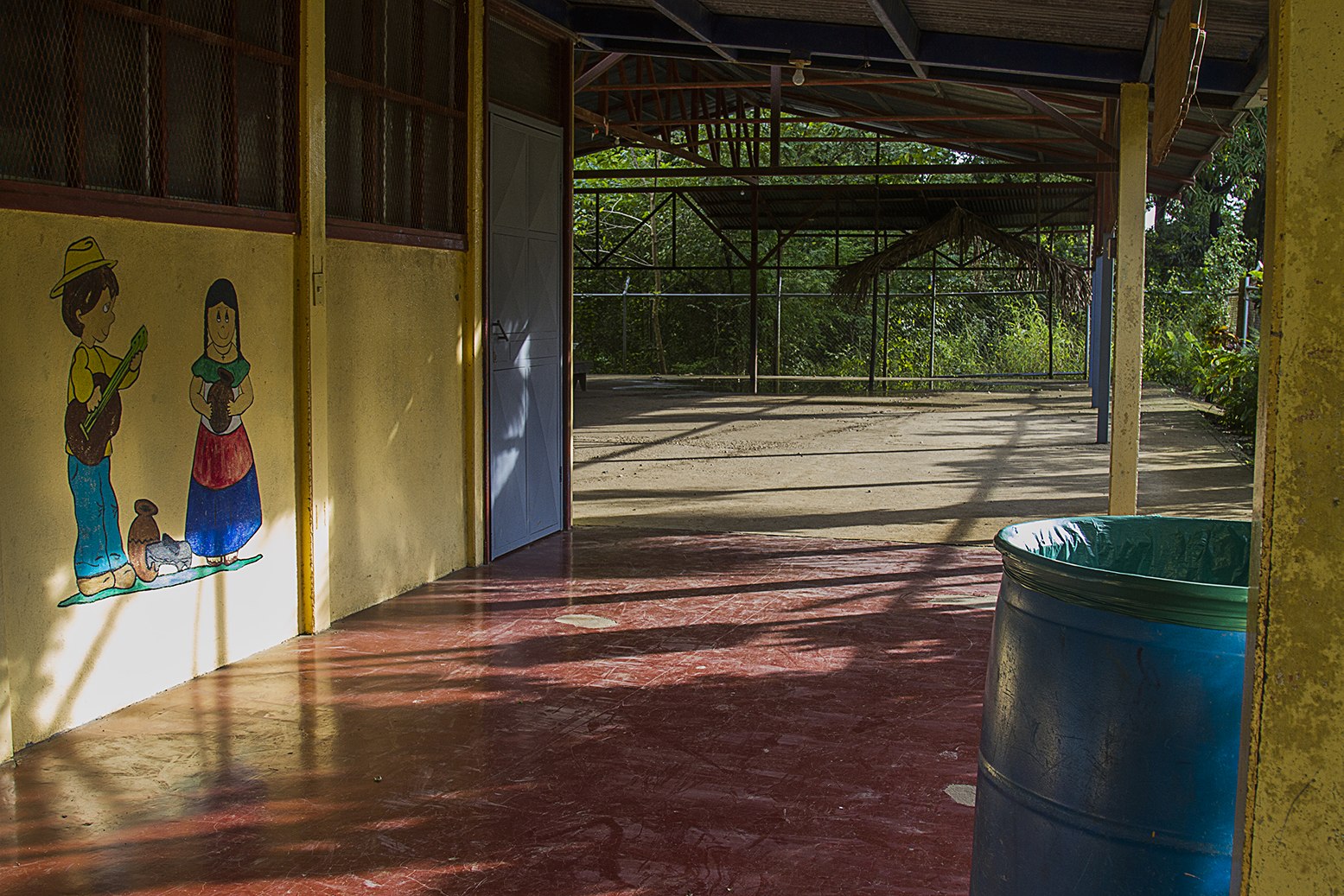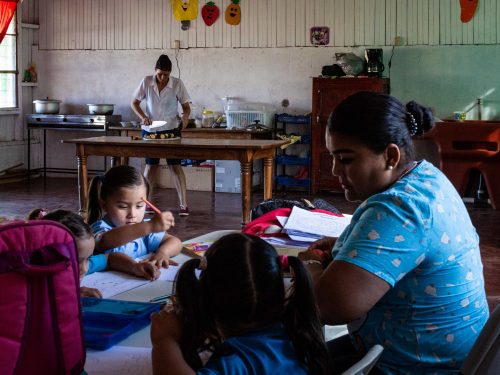
“I hate school,” recalls Carla with pain (not her real name), who was willing to tell us her story but requested that we protect her identity. “I was 13 years old, in seventh grade in high school and all of my classmates made fun of me because of my nationality,” she related.
Bullying is the main form of violence in the nation’s schools and high schools. It shows up as ridicule, discrimination and exclusion, and in some cases beatings. It happens in the high school corridor, the classroom or in the hallways, both during recess and during classroom hours, as well as on social networks on the Internet, through phone calls and text messages, known as cyber bullying.
According to date from the Ministry of Public Education (MEP), this type of mistreatment is most common for 12- and 13-year-olds.
Carla studied in Samara’s rural high school and remembers that the worst years were seventh and eighth grades when all of her classmates made fun of her every day. “They called me Nica regalada, paisa and made fun of the way I talked,” she commented.
The verbal abuse from her classmates was so bad that she sought out the help of her teachers and even the high school principal but none of them did anything to remedy the situation.
Maria, Carla’s mother, recalls that on several occasions her daughter came home crying, saying that she didn’t want to study or return to the high school. “I went to explain the situation to the teachers and they told me that it was nothing, that it was kids stuff,” she said. Then Maria decided that her daughter would continue her studies in another institution, so midway through her last year, Carla transferred to Belen High School, where she earned her diploma.
Carla’s situation is just one example of how complicated it has become for students to get along with their classmates. According to data from the orientation department of the Nicoya High School, just last year more than 100 cases of bullying were reported, not including cases where the student or classmates don’t report the abuses.
Sara Cabalceta, head of the institution’s orientation department, commented that the majority of cases are reported during the first years of high school, mainly in seventh and eighth grades. She considers that it is more common in these grades because the teenagers “are in a transition stage” coming from elementary school and since they are the “little ones” of the high school, they suffer the abuses of the upperclassmen in tenth or eleventh grade.
Looking for a Solution
In September of 2012, MEP presented the National Coexistence Program, which contains the Integrated Protocol for Attending to Violence in Secondary Educational Centers. In April of this year, the protocol for primary educational centers was also presented.
Sulay Salas Valenciano, regional director of MEP in Nicoya, explained that the objective of these programs is to permit the 182 educational centers in the canton to diagnose and intervene in cases of violence. Salas indicated that all of the directors know the protocols now because since last year the regional direction presented them and explained how to apply them. In addition, she expressed that the information is also known by the supervisors of the eight educational circuits in the canton of Nicoya.
Efraín Baltodano, supervisor of circuit 1, acknowledged that in most of the educational institutions of his circuit, the protocols are being applied. However, he considers it likely that in some high schools the principal or councilor doesn’t apply the protocols for lack of knowledge of part of the process or for simple neglect. In addition, he pointed out the obligation that each regional direction has to train the principals and teachers of the institutions each year since many of them are temporary and transferred to other schools. Therefore it becomes necessary to train the new instructors.
Jose Luis Ramirez, director of the Nicoya High School, affirmed that he knows the protocols and that currently they are being applied in the institution, but he believes that although they serve as a guide for the teachers and councilors, the parents also should know them to support and aid in the labor of educating youths so they don’t turn into bullies.
On the other hand, Ramirez firmly believes that the current evaluation rules prevent them from being more drastic with the misconduct of the students. “If a student hits another, the most I can do is suspend him for 30 days,” he commented. He recalled that the former evaluation rules, which were reformed in 2009, permitted principals to expel a student from the institution and even deny registration. “Now I feel that many professors are afraid of the students since they don’t feel protected by the law,” affirmed Ramirez.
But the powerlessness that Ramirez feels because of not being able to be a little stricter with the students isn’t felt just by him and other professors; many parents also see themselves as limited and incapable of imposing their authority on today’s teenagers. Cabalceta, who works in the Nicoya High School and is in charge of the orientation department, expressed feeling worried and powerless since there are fathers and mothers that tell her, “I don’t know what to do with my child,” because they misbehave at home and at the high school too.
Carmen Prado, also a councilor at the Nicoya High School, added, this shows that [the parents] are the ones directly in charge of educating them and they don’t know how or don’t want to educate them at home and they look to us to do their job.”
Eduardo Alvarez Garro, neuroprogramming psychologist, explained that the causes that originate bullying are related to personal factors of a family and social nature, as well as the school culture of the aggressor and the victim. Also the background and the environment that surrounds the youth influence whether he or she will abuse or mistreat peers verbally or physically. “Teenagers reproduce the patterns they learn in their immediate environment,” indicated Alvarez, so if the youth is personally a victim at home or sees his or her parents attack other people, it is very likely that he or she will imitate these behaviors.
And for the victims, the family environment also influences their self esteem and how they face or even ignore attacks. Garro said that at home parents should assure the young victim of abuses of their virtues and of how important they are to them, since a youth that feels loved and valued and knows how to give love, “will be able to accept him or herself and accept others,” he explained.







Comments